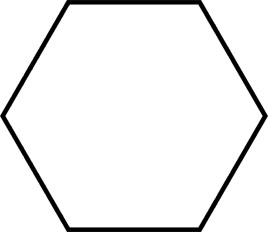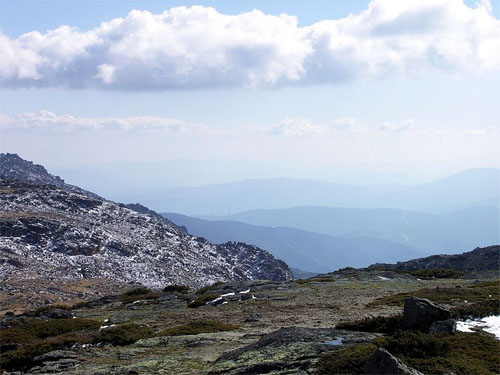Rob Conley over at Bat in the Attic has posted some nice “rules of thumb” for long distance sighting in hexcrawls.
Meanwhile the Hydra’s Grotto points out that Conley is low-balling mountains in his post “Mountains and Mole-Hills“.
 I’m posting this because (a) I find their posts useful and insightful, but also (b) because I think they’ve both missed the mark on mountains.
I’m posting this because (a) I find their posts useful and insightful, but also (b) because I think they’ve both missed the mark on mountains.
(Note that Conley uses a 5-mile hex, the Hydra’s Grotto uses a 6-mile hex, and I use a 12-mile hex. I use the 12-mile hex specifically because it simplifies away a lot of hex-to-hex sighting questions. But for the purposes of this post, I’m going to try to simplify things by converting back into actual measurements.)
When I did my series on Hexcrawls, I included a post on spotting distances. In that post, I included my rule of thumb that mountain ranges can be seen from 72 miles away, but I didn’t talk much about where I derived that value from: Basically, I did some quick research and determined that most mountain ranges have an average height of 3,000 feet or thereabouts. Notable peaks within a range will often be higher than that, but the average height of the range is 3,000 feet. And if you just do the calculations, you’ll discover that you can see an object 3,000 feet high from about 68 miles away (which I then rounded up to 6 hexes x 12 miles per hex = 72 miles). Or, if you reverse the math, I’m saying that at a distance of 72 miles you can see the occasional peak that’s up to 3,500 feet high in that range or thereabouts.
And so, for example, PCs can see the mountain range in my OD&D hexcrawl from about 6 hexes away. But there’s also a notable peak in hex L2 (the Stone Tooth from Forge of Fury) that’s not as high and can only be seen from 3 hexes away. And there’s also a volcano in hex K1 from which the smoke plume can be seen from much further away if it’s smoking. And a very tall peak of 10,000 feet in hex A1 which could theoretically be seen from 10 hexes away on a clear day.
The “clear day” proviso is an important one. The atmosphere itself will have an impact on your viewing distance (particularly for fine details) and haze can significantly decrease it:
But I digress: Conley makes his calculations on the distance mountains can be seen from based on an elevation of 1,000 feet. That’s roughly the minimum height of a mountain and, therefore, way too low for seeing a range of mountains from the distance. Hydra’s Grotto aims equally high above average with an elevation of 5,000 feet, which actually exceeds the maximum height of some mountain ranges.
One thing I would pick up from both Conley and the Hydra’s Grotto is the idea of adding a specific mechanic for “finding a good place to sight from” that chews up some time but allows you to see a little further than you normally would. That idea is inherent in the guidelines for determining spotting distance based on the horizon and height (find a tree and you can see further), but hooking it as a specific, mechanical choice might encourage its presence in actual play.













Where I live (WA state), the mountain passes (that is, the lowest points between peaks that are easiest to traverse) start at 3000′ elevation and go up to well above 4000′. And you definitely can’t see even those heights at a distance because closer-in hills of quite modest height block them.
Average has got to be about 5000′, or higher. 5000′ is a pretty good starting point for mountains visible at a distance (with foothills visible closer in), assuming you were on a local high point. The major peaks are from 7000 to 14000 feet. From some places you can see three or four peaks of more than 10000 feet at the same time.
There are smaller ranges but many (Rockies, Himalayas) are much bigger.
Basically I think the higher range of estimates is actually more realistic, particularly for fantasy mountains. My long-running campaign world has several peaks (half a dozen or so) over 20k.
But the hex visibility idea is a good one, and can be adapted for whatever mountains exist in a given world.
Just dropping a note to say that I am using your hex crawl structure to run some players through X1 this weekend. I’ll pop back in afterwards to let you know how it goes. From my perspective as a DM, the clean procedure is perfect!
@Cascadian: If you’re talking about the Blue Mountains, they’ve actually got an average elevation of 6,500 ft. And the two hightest peaks are about 9,000 ft. If you’re talking about the Cascade Volcanoes, I’m not sure what the average elevation is but there’s a pretty regular distribution of 10,000 ft. or higher peaks in that range.
On reflection, I suspect mountain ranges are few enough and significant enough you could probably just define the average height of any given range and use that to determine sighting distances on a case-by-case basis (with individual, notable peaks being called out in each range).
@Richard: Looking forward to it!
The average height of mountains may be 3000 feet, but the big ones do get in the way of the smaller ones. I assumed that 5000 feet is pretty good given the orders of magnitude that a DM would be working off of on the fly. I guess I would call it a fly rule. Obviously specific peaks that work into the campaign or adventure would be detailed enough to work with using a calculator and equation. This is a we find a place to look around, how far do we see rule more than a covers all rule.
The procedure worked very well, in particular:
1. The DM prep sheet helped me keep things organized!
2. The players really got a sense of being exposed – they now have a healthy respect for the wilderness – and that’s without leaving the trail!
3. I created an encounter spreadsheet to pregenerate a list of encounters which really speeds things up.
Anyway, I’ll be continuing to use it, it worked very well. The only real modifications were to transition to a 6 mile hex (easy) and having fewer locations. I don’t have the time at the moment to do the sandbox prep, so instead I’ll be creating a dozen locations that can be place randomly as they are encountered, to mix in with the pre-populated ones in the module.
Thanks for making it public!